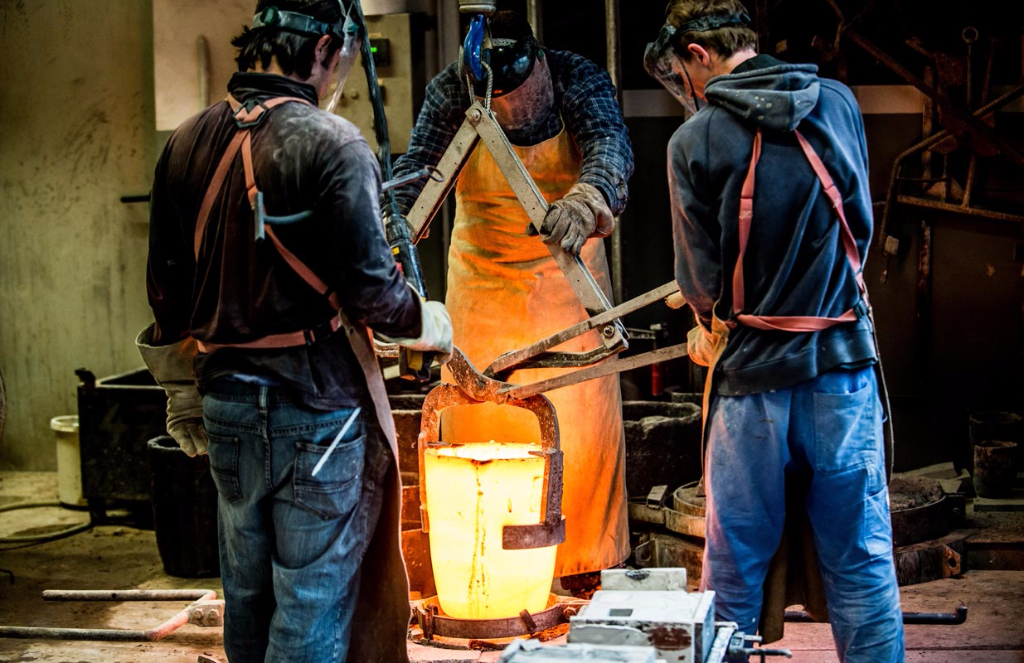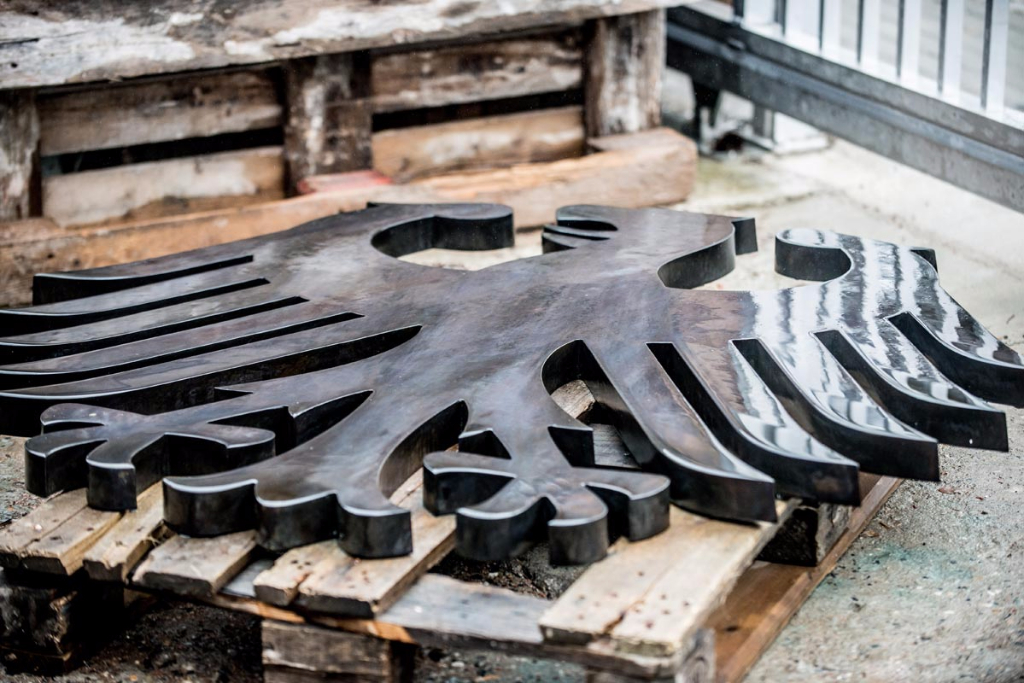Thomas Ihle’s workroom is full of fascinating objects. Shields that look as if they come from ancient Rome, small sculptures and inscribed tablets all stand side by side with a state-of-the-art 3D printer. “I’m experimenting with making casting moulds,” says the 48-year-old, with a nod towards the hightech device. Ihle and his brother set up the Bildguss art foundry in 1990; in 2008 the workshop moved to a former industrial area in north Dresden. It’s here that the new Ludwig Richter statue first saw the light of day, albeit in several pieces. “A figure this size is too large to be cast as a single piece,” explains Thomas Ihle. Before he set up his own business, the trained mouldmaker and chaser worked in a large foundry where he was responsible for precision work after the casting process, and fine details remain very important to him. “We work a lot with artists and ambitious amateurs,” says Ihle, who appreciates that they often have “a very specific vision” of the end result. But creating a finished artwork is a long process. It all starts with a plaster model. For smaller castings, this can be made of wax or a special type of plastic from a 3D printer. The model is used to form the mould, which in the case of large statues often consists of dozens of pieces.


